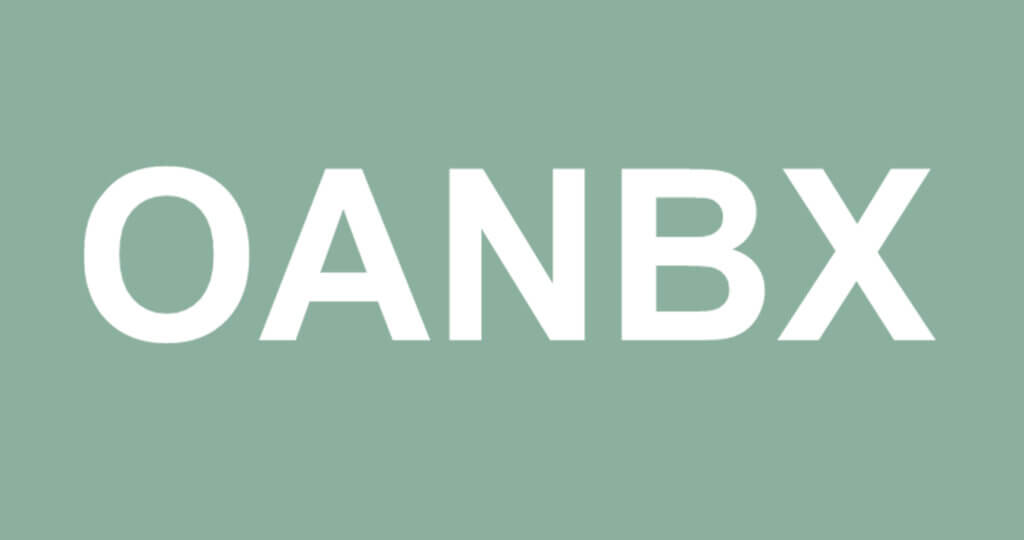Oakmark Equity and Income Fund – Investor Class
Average Annual Total Returns 12/31/19
Since Inception 11/01/95 9.89%
10-year 7.78%
5-year 5.79%
1-year 19.31%
3-month 5.84%
Gross Expense Ratio as of 09/30/19 was 0.91%
Net Expense Ratio as of 09/30/19 was 0.81%
Past performance is no guarantee of future results. The performance data quoted represents past performance. Current performance may be lower or higher than the performance data quoted. The investment return and principal value vary so that an investor’s shares when redeemed may be worth more or less than the original cost. To obtain the most recent month-end performance data, view it here.
Market Inequality
In this politically fraught time, it seems that advocates call out inequality in almost every social and economic endeavor, and now it is the stock market’s turn. Many commentators have noted the increasing gap in profit margins favoring the largest U.S. companies over all the rest, a reversal of the outcome in the first decade of this century. Superior profitability has led to superior equity performance for many of the largest companies. The Equity and Income Fund has implicitly recognized this development: we now maintain a higher proportion of large capitalization stocks in the equity allocation of the portfolio than we did in the Fund’s early years.
But Hendrik Bessembinder of the Carey School of Business at Arizona State University1 recently discovered an even greater inequality. According to Bessembinder, since 1990, 56% of U.S. stocks have failed to beat the return on cash (as represented by the return on one-month Treasury bills). He also found that the top 1.3% of companies account for almost all of the net increase in global stock market wealth creation over the 30 years he included in his study. Overall, Bessembinder’s work shows that the stock market earns returns well in excess of Treasury bills, but it accomplishes this through very large returns to few stocks rather than excess returns to average stocks.
We do not have the ability to study all of Bessembinder’s data, but we do consider its implications for our equity portfolio. To review quickly, we are value investors. We attempt to identify companies selling at a discount to our estimate of their intrinsic value per share, that persistently grow their intrinsic value per share, and that have managers who act and think like owners of the business.
Bessembinder’s work suggests that our focus on determining whether a company is growing its intrinsic value per share is vital. We well know the danger of “value traps,” i.e., businesses that are priced cheaply because their business value is deteriorating over time. Long before Harris Associates introduced the Oakmark family of mutual funds, the firm developed its three-part definition of value, in part to mitigate the risk of potential value traps. Our value discipline might seem at odds with an investing environment where the winners are generating a disproportionate share of return, but this is not necessarily the case. For example, Fund holding Mastercard has increased in price roughly 13 times from our initial purchase. We have been able to maintain a position in the company because our understanding of the growth in its intrinsic value has grown commensurate with its price. Two other long-held names that demonstrate this attribute are Nestlé and UnitedHealth Group. It is our job to seek the issues that can produce this sort of outcome for the portfolio. Although the extreme outcome inequality that Bessembinder describes makes this search more difficult, it is our challenge.
Year/Quarter Review
2019 proved to be a strong year for U.S. stocks and bonds. Of course, this followed a roughly 20% drop in stock indexes during the fourth quarter of 2018. In 2018, the Federal Reserve increased interest rates four times. Old-timers may remember investment strategist Edson Gould who coined the phrase “three steps and stumble” to describe the stock market’s response to a series of Fed interest rate hikes, and 2018 demonstrated the wisdom in that rubric. In the second half of 2019, the Fed apparently took the stock market’s message to heart and reversed course by cutting rates three times.
During the year, recession fears and forecasts waxed, and investors began to keep a tally of the number of times the word “recession” appeared in news articles. The Treasury yield curve inverted in the spring, meaning that long-term interest rates fell below short-term rates. This seemed to buttress the recession case because the historic record shows that inverted yield curves have preceded economic downturns. But, later in the year, the economic clouds began to dissipate, the yield curve lost its inversion and economic sentiment rebounded, especially when it appeared that U.S./China trade talks were developing favorably. The renewed confidence helped to support a particularly good fourth quarter for U.S. equities.
The Equity and Income Fund earned 6% in the quarter, which contrasts to a 5% gain for the Lipper Balanced Fund Index, the Fund’s performance benchmark. For calendar 2019 as a whole, the Fund showed a gain of 19%, which matches the return for the Lipper Index. We are pleased to report that the annualized compound rate of return since the Fund’s inception in 1995 is 9.9%, while the corresponding return to the Lipper Index is 7.0%.
The largest contributors to portfolio return in the quarter were Bank of America, UnitedHealth Group, CVS Health, Citigroup and Charter Communications. Ally Financial, TD Ameritrade (sold), Foot Locker, American International Group and General Motors detracted most. For all of calendar 2019, Bank of America, Mastercard, Charter Communications, TE Connectivity and Citigroup led the contributors, while Foot Locker, TD Ameritrade, National Oilwell Varco, Diamondback Energy and Qurate Retail (sold) detracted most from return.
Transaction Activity
We made no significant changes to the total asset allocation of the Fund during the quarter. The equity percentage increased somewhat because of the strong rally in share prices. As noted above, the yield curve became “uninverted” in the quarter as short-term rates declined below intermediate and longer term rates. The Fund’s fixed income duration, the measure of sensitivity to changes in interest rates, increased modestly in the period. As always, our fixed income team continually works to identify opportunities to improve the Fund’s bond allocation.
We initiated one new equity holding while eliminating one in the quarter. The elimination, TD Ameritrade, proved to be badly timed as the company announced a merger agreement not long after our sale. We sold Ameritrade as part of our tax-loss harvesting process that helps moderate the Fund’s capital gains’ distributions. The company’s share price declined after its competitor Charles Schwab announced it was eliminating commissions on equity trades. We took the Ameritrade loss at that time to offset previously realized gains. We regret the infelicitous timing of the sale.
Our new purchase was EOG Resources, the largest independent oil production company in the U.S. onshore region. The company has built a unique decentralized and returns-focused corporate culture, which has produced returns in excess of peers through multiple commodity cycles. This relentless focus on returns has resulted in leading capabilities in land acquisition cost, well design, operating cost efficiency and technology innovation. EOG expects that over 90% of the wells it will drill over the next 10-12 years will generate economic returns at a $40 per barrel oil price. (The price per barrel for West Texas Intermediate was $61 as of January 2.) This low position on the cost curve should allow EOG to grow oil production at a sustained mid-teens rate at today’s oil prices, even though its shares trade at just 6x EV/EBITDA. This compares favorably to the S&P 500, which historically grows earnings at a mid-single digits pace and trades in a 10-14x EV/EBITDA range. Shares of energy companies performed poorly in 2019, despite the robust stock market rally. We believe that this industry may offer unusual attraction today.
We thank our fellow shareholders for investing in the Equity and Income Fund and invite your comments and questions.
1Bessembinder, Hendrik and Chen, Te-Feng and Choi, Goeun and Wei, Kuo-Chiang, Do Global Stocks Outperform US Treasury Bills? (July 5, 2019)
The securities mentioned above comprise the following percentages of the Oakmark Equity and Income Fund’s total net assets as of 12/31/19: Ally Financial 1.9%, American Intl Group 0.9%, Bank of America 5.3%, Charles Schwab 0%, Charter Communications Cl A 2.4%, Citigroup 2.9%, CVS Health 2.9%, Diamondback Energy 0.6%, EOG Resources 0.5%, Foot Locker 1.2%. General Motors 4.7%, Mastercard Cl A 3.3%, National Oilwell Varco 0.4%, Nestlé ADR 3.0%, Qurate Retail 0%, TD Ameritrade 0%, TE Connectivity 4.3% and UnitedHealth Group 1.9%. Portfolio holdings are subject to change without notice and are not intended as recommendations of individual stocks.
The net expense ratio reflects a contractual advisory fee waiver agreement through January 27, 2020.
The Lipper Balanced Fund Index measures the equal-weighted performance of the 30 largest U.S. balanced funds as defined by Lipper. This index is unmanaged and investors cannot invest directly in this index.
The S&P 500 Total Return Index is a float-adjusted, capitalization-weighted index of 500 U.S. large-capitalization stocks representing all major industries. It is a widely recognized index of broad, U.S. equity market performance. Returns reflect the reinvestment of dividends. This index is unmanaged and investors cannot invest directly in this index.
The EV/EBITDA ratio is a comparison of Enterprise Value and Earnings Before the deduction of payments for Interest, Taxes, Depreciation and Amortization which is a measure of operating income.
The Fund invests in medium- and lower-quality debt securities that have higher yield potential but present greater investment and credit risk than higher-quality securities, which may result in greater share price volatility. An economic downturn could severely disrupt the market in medium or lower grade debt securities and adversely affect the value of outstanding bonds and the ability of the issuers to repay principal and interest.
The Oakmark Equity and Income Fund’s portfolio tends to be invested in a relatively small number of stocks. As a result, the appreciation or depreciation of any one security held by the Fund will have a greater impact on the Fund’s net asset value than it would if the Fund invested in a larger number of securities. Although that strategy has the potential to generate attractive returns over time, it also increases the Fund’s volatility.
The discussion of the Fund’s investments and investment strategy (including current investment themes, the portfolio managers’ research and investment process, and portfolio characteristics) represents the Fund’s investments and the views of the portfolio managers and Harris Associates L.P., the Fund’s investment adviser, at the time of this letter, and are subject to change without notice.
Harris Associates L.P. does not provide tax or legal advice. Please consult with a tax or legal professional prior to making any investment decisions.
All information provided is as of 12/31/2019 unless otherwise specified.








